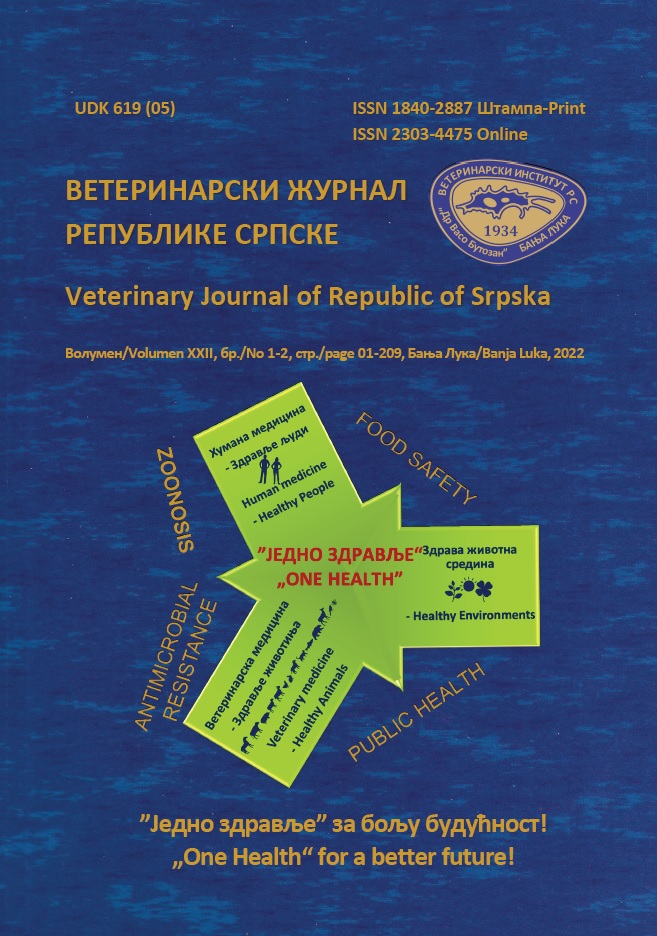CRYPTORCHIDISM IN DOGS
DOI:
https://doi.org/10.7251/VETJEN2201142SAbstract
Cryptorchidism is a disease that is manifested by the retardation of the testicles with the associated anatomical structures inside the abdomen or inguinal canal. In dogs, the appearance of cryptorchidism is of unclear etiology, but it is believed to have a genetic basis. The "gold standard" in the diagnosis of this disease is ultrasound diagnostics with a sensitivity of 95-100%.
The study was conducted on 10 dogs. The clinical examination of dogs suspected to suffer from cryptorchidism was initially carried out using adspection and palpation methods, after which an ultrasound examination was performed to identify and localize residual testicles. All dogs underwent surgical removal of both residual and physiologically descended testicles. A pathohistological analysis was performed on the removed residual testicles.
Bilateral cryptorchidism was found in 2 out of 10 dogs (20%), while unilateral cryptorchidism was found in 8 out of 10 dogs (80%). Right unilateral cryptorchidism was found in 5 out of 8 dogs (62.5%), while left unilateral cryptorchidism was found in 3 out of 8 dogs (37.5%). The predictive value of the comparison of ultrasound identification and localization of residual testicles with their surgical identification and localization in this study was 100%. The results of the pathohistological analysis showed the presence of tumorous changes in the type of seminoma on one testicle in one dog (unilateral inguinal cryptorchidism), while the diagnosis of testicular atrophy was made in the remaining 9 dogs with morphologically changed testicles.

